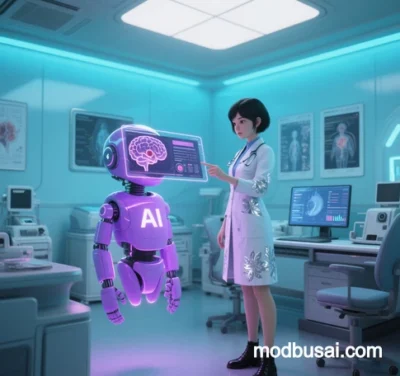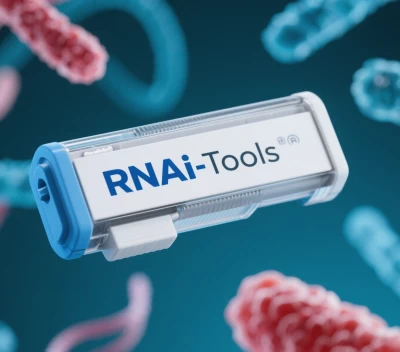
Medical Devices with Modbus AI (Analog Input) Applications
(As of May 2025)
I. Definition and Core Technologies
Modbus AI (Analog Input) is a signal acquisition technology based on the Modbus protocol. It converts physical parameters (e.g., pressure, temperature, current) from medical devices into standardized electrical signals (0–20mA or 4–20mA) and transmits them via Modbus RTU to control systems. Key advantages include:
- High Precision: 16-bit resolution (0.1% accuracy) for monitoring subtle physiological signals (e.g., blood flow pressure, respiratory waveforms).
- Anti-Interference: Optical isolation and surge protection ensure electromagnetic compatibility (EMC) in medical environments.
- Protocol Compatibility: Integrates with EtherCAT, Profinet, and other industrial gateways for multimodal data fusion.
II. Modbus AI Device Inventory in Healthcare
| Category | Device | Function | Technical Specifications | Application |
|---|---|---|---|---|
| Vital Signs Monitoring | ||||
| Multiparameter Monitor | Ruikeda LW SA7102C Collector | Collects ECG, SpO₂, and blood pressure signals via Modbus RTU for central monitoring. | 2-channel 0–20mA input, 16-bit resolution | ICU, Operating Rooms |
| Ventilator Pressure Sensor | JH-ECT002 Protocol Gateway | Tracks airway pressure waveforms in real time, integrating AI for lung compliance prediction. | Range: -20–100cmH₂O, 100Hz sampling rate | Critical Care, Anesthesia |
| Imaging & Diagnostics | ||||
| MRI Gradient Coil Cooling | Nuodajia IPC-615H-H81 Controller | Monitors coil temperature (0–20mA) to prevent overheating. | 6 Modbus RTU ports, IP65 protection | MRI Systems |
| CT High-Voltage Current Detector | Bosch Specialized Controller | Measures X-ray tube current (mA-level signals) to optimize radiation dose. | Isolated input, explosion-proof, ±0.5% accuracy | Radiology, Interventional Suites |
| Therapeutics & Surgery | ||||
| Dialysis Machine Flowmeter | ADI Smart Sensor Module | Monitors dialysate flow (4–20mA) for dynamic ultrafiltration rate adjustment. | Response time <10ms, anti-clotting design | Nephrology, Dialysis Centers |
| Surgical Robot Force Feedback | Toumai 2000 System | Provides real-time force feedback (0–20mA) to prevent tissue damage. | 16-bit ADC, 0–10N dynamic range | Minimally Invasive Surgery |
| Environment & Auxiliary | ||||
| Cleanroom Pressure Sensor | Ruikeda LW SA7102C Collector | Monitors surgical room pressure (Pa-level accuracy) to ensure sterility. | Range: -50–50Pa, ±0.2% linearity | Laminar Flow Rooms, Labs |
| Medical Gas Pressure Monitor | JH-ECT002 Protocol Gateway | Centralizes oxygen/vacuum pipeline pressure monitoring with auto-alerts. | Multi-channel input, HART protocol support | Hospital Gas Supply Systems |
III. Integration Strategies
Hardware Architecture
- Edge Layer: Isolated analog collectors (e.g., LW SA7102C) standardize signals to eliminate common-mode noise.
- Network Layer: Gateways (e.g., JH-ECT002) convert Modbus RTU to EtherCAT/MQTT for integration with PACS/HIS systems.
- Platform Layer: Android-based interfaces (4K touchscreens) enable real-time waveform visualization and data analysis.
Performance Optimization
- Noise Reduction: Shielded twisted-pair cables and ferrite cores protect μV-level signals (e.g., ECG).
- Dynamic Calibration: AI compensates for sensor drift (e.g., SpO₂ probe degradation).
Safety & Compliance
- Encryption: Quantum Key Distribution (QKD) secures Modbus communication against tampering.
- Certifications: Complies with IEC 60601-1 (electrical safety) and FDA 510(k) (EMC).
IV. Industry Use Cases
Smart ICU Monitoring (Tier-3 Hospital)
- Setup: 12× LW SA7102C + 3× JH-ECT002 + Bosch controller.
- Function:
- Collects vital signs (ECG, SpO₂, IBP) across 32 beds with <50ms latency.
- AI predicts sepsis risk (AUC=0.92), enabling 6–8 hour early warnings.
- Impact: 40% faster nurse response, 18% lower ICU mortality.
Hybrid OR Energy Management (Cardiovascular Center)
- Setup: Nuodajia IPC-615H-H81 + ADI smart meters + Ruikeda sensors.
- Function:
- Monitors DSA and bypass machine power consumption (0–20mA), optimizing UPS load.
- Triggers EtherCAT emergency stops for abnormal power events (e.g., motor jams).
- Impact: 65% fewer device failures, 12,000 kWh annual energy savings.
V. Future Trends
- AI-Driven Sensing: Federated learning reduces calibration frequency (monthly → annually).
- Multi-Protocol Integration: Modbus/TCP over 5G enables cross-hospital device networking (<10ms latency).
- Nano-Scale Sensors: Flexible e-skin (0–20mA output) provides 0.01N-resolution tactile feedback for surgical tools.
Data sourced from public references. For collaboration or domain inquiries, contact: chuanchuan810@gmail.com.




